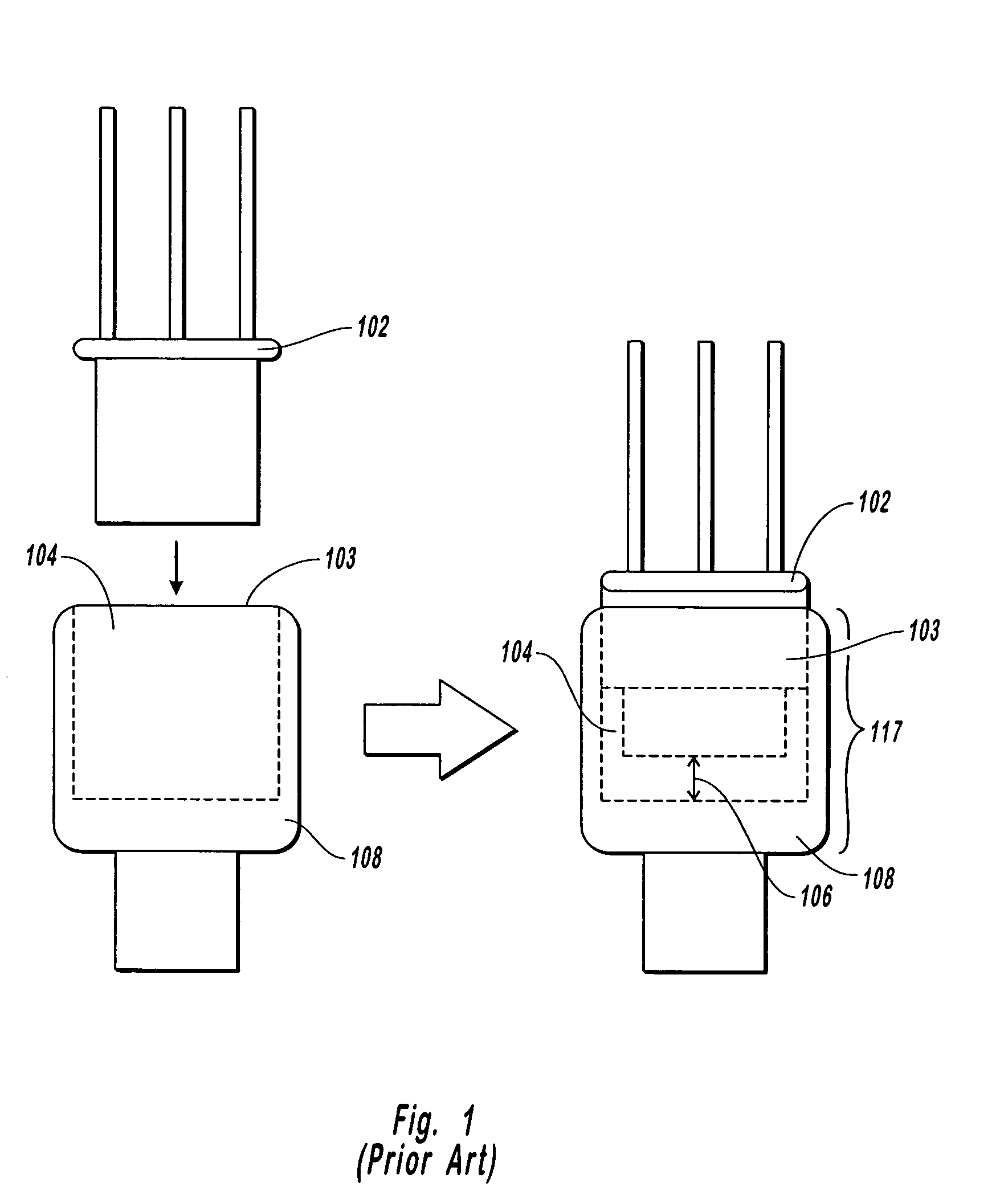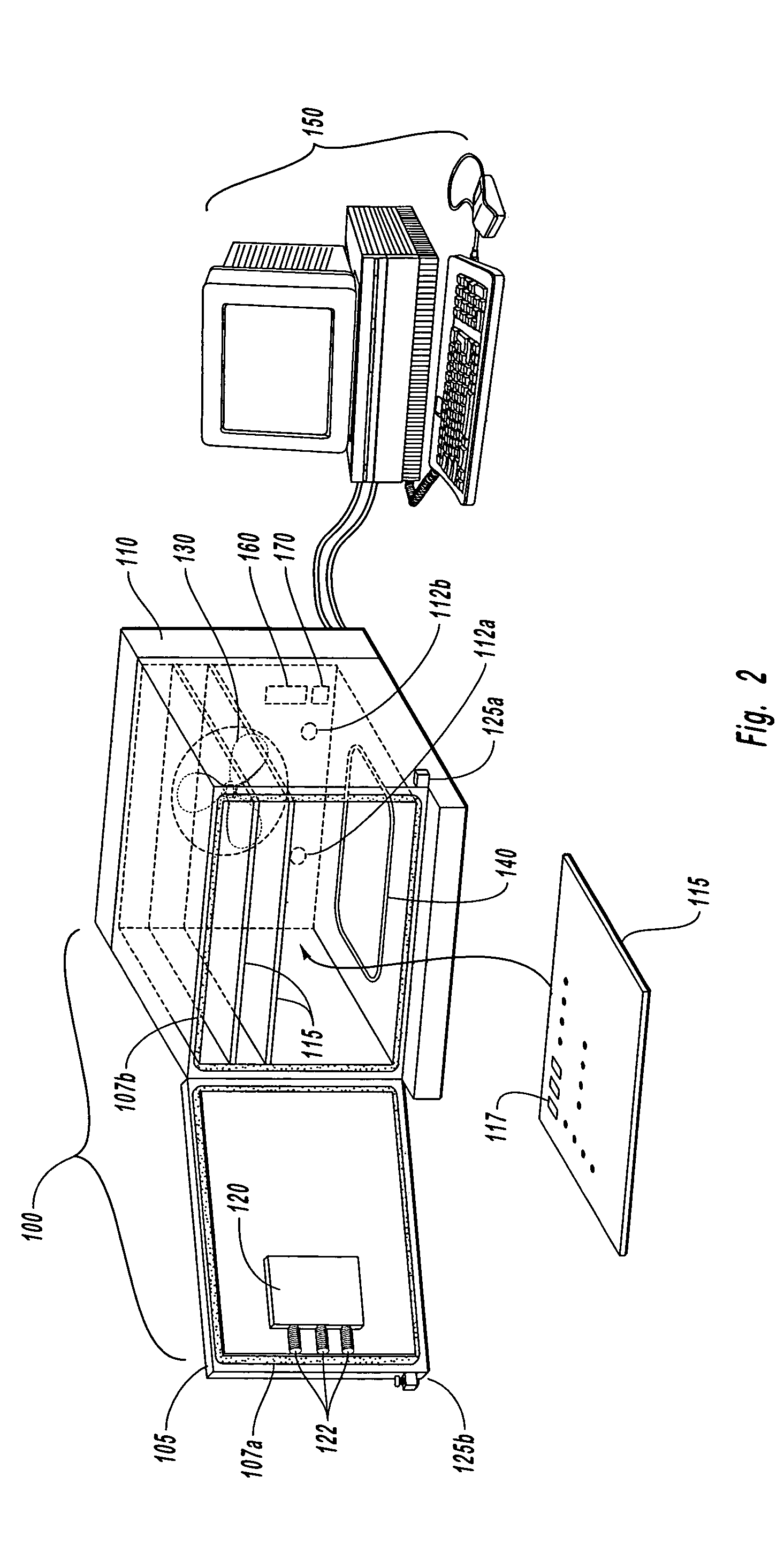Optical product cure oven
a technology of optical products and ovens, applied in the field of systems, apparatus, and methods for curing optical components, can solve the problems of large care, small amount of air, and large care requirements of systems and methods for manufacturing certain products, such as optical products and related subcomponents, and achieve the effect of increasing the ra
- Summary
- Abstract
- Description
- Claims
- Application Information
AI Technical Summary
Benefits of technology
Problems solved by technology
Method used
Image
Examples
Embodiment Construction
[0025] The present invention extends to systems, apparatus, and methods for curing adhesives efficiently at a relatively higher rate than otherwise possible. In particular, an oven can be configured to cure two or more optical subcomponents of an optical assembly at a certain pressure, such that the two subcomponents adhere to one another without being broken apart.
[0026] In particular, FIG. 2 illustrates one implementation of a system for curing adhesives, such as epoxy adhesives, used to assemble optical subcomponents. As shown, an exemplary system can comprise a cure oven 100 that is configured to adjust internal pressure inside the cure oven 100 chamber while adjusting heat to a critical temperature. As will be understood from the present specification and claims, the system is designed in such a way that assembled optical subcomponents can be cured rapidly and efficiently.
[0027] In one implementation, an exemplary cure oven 100 comprises a steel, inner chamber that is approxi...
PUM
| Property | Measurement | Unit |
|---|---|---|
| temperature | aaaaa | aaaaa |
| temperature | aaaaa | aaaaa |
| temperature | aaaaa | aaaaa |
Abstract
Description
Claims
Application Information
 Login to View More
Login to View More - R&D
- Intellectual Property
- Life Sciences
- Materials
- Tech Scout
- Unparalleled Data Quality
- Higher Quality Content
- 60% Fewer Hallucinations
Browse by: Latest US Patents, China's latest patents, Technical Efficacy Thesaurus, Application Domain, Technology Topic, Popular Technical Reports.
© 2025 PatSnap. All rights reserved.Legal|Privacy policy|Modern Slavery Act Transparency Statement|Sitemap|About US| Contact US: help@patsnap.com



